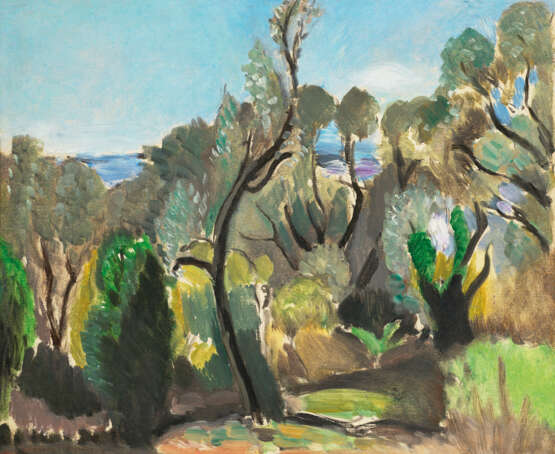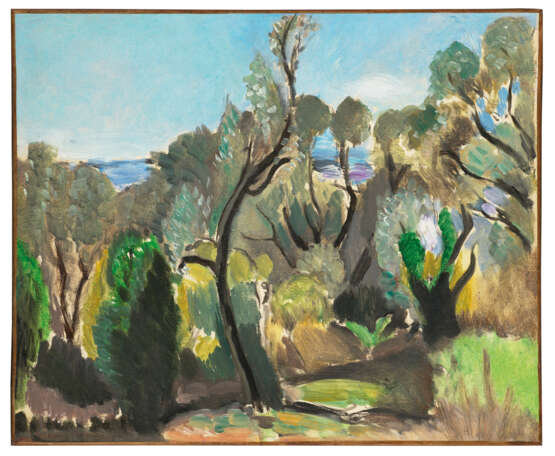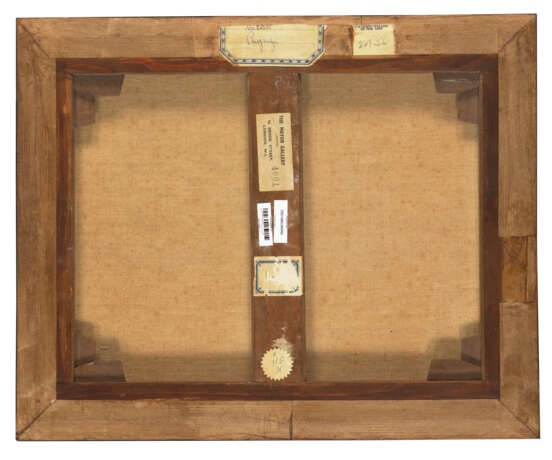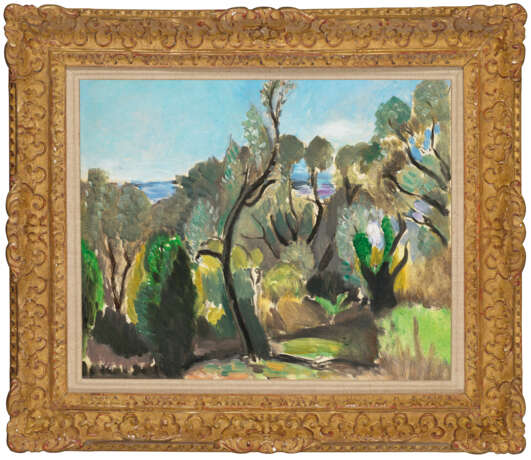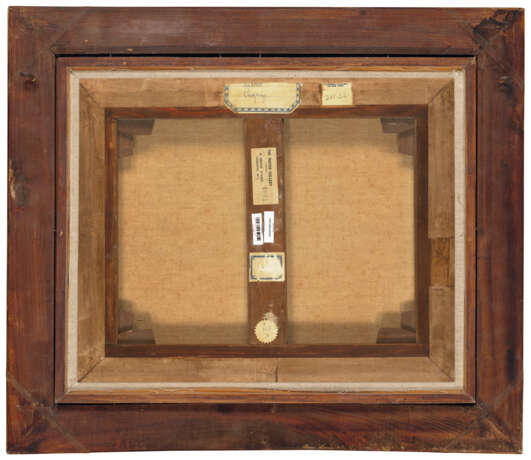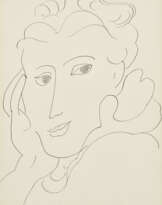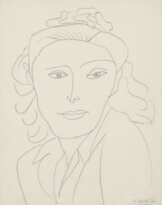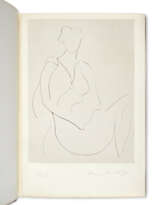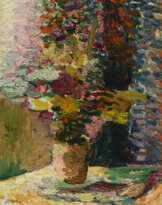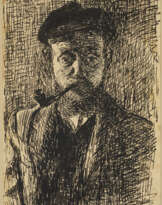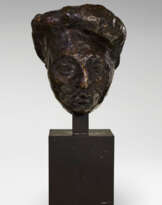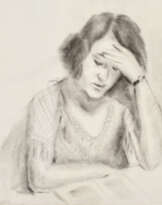ID 1177495
Лот 4 | Henri Matisse (1869-1954)
Оценочная стоимость
€ 150 000 – 250 000
Paysage aux environs de Nice ou Les Oliviers ou Coin du Mont-Boron
signé 'Henri Matisse' (en bas à gauche)
huile sur toile
32 x 40 cm.
Peint vers 1918
signed 'Henri Matisse' (lower left)
oil on canvas
12 5⁄8 x 15 ¾ in.
Painted circa 1918
Provenance
Atelier de l'artiste.
Edward Molyneux (dit "Captain Molyneux"), Londres et Paris (acquis auprès de l'artiste en 1938).
The Lefevre Gallery (Alex Reid & Lefevre, Ltd.), Londres.
The Mayor Gallery, Londres (acquis auprès de celle-ci).
Acquis auprès de celle-ci par la famille du propriétaire actuel en juin 1952.
Exhibited
Londres, The Mayor Gallery, Paintings, novembre 1951, no. 20 (daté '1921').
Colombus, The Colombus Gallery of Fine Arts, Paintings Belonging to Mr. Derek Jakson of Lausanne, Switzerland, 1957 (illustré).
Further details
« J'ai travaillé à la manière des impressionnistes, au contact direct de la nature, puis j'ai eu soif de densité, d'une expression plus intense avec les lignes et les couleurs. J'étais donc bien obligé de sacrifier en partie d'autres nuances, des matières, de la profondeur et de la richesse de détails. À présent, je voudrais rassembler tout cela...»
Henri Matisse, cité dans P. Schneider, Matisse, Londres, 1984, p. 507.
Dans l'ombre des dernières années de la Grande Guerre, Matisse semble trouver un certain apaisement dans la réalisation de paysages de petit format : le fait de pouvoir les achever en une journée, et souvent en plein air, lui fixe un objectif accessible et lui accorde des moments de solitude dans un environnement naturel intime, indemne des ravages de la guerre.
Ce retour au paysage coïncide avec son intérêt renouvelé pour le travail des Impressionnistes. Après l'enivrante période du Fauvisme et le développement de l'abstraction, Matisse est partagé entre le désir instinctif d'explorer de nouveaux horizons et ses doutes sur les conséquences possibles de cette recherche. Pour s'aider dans sa réflexion, il entre en relation avec plusieurs artistes de la génération précédente, avide de leurs conseils. À partir de novembre 1916, il échange régulièrement avec Claude Monet; en 1917, il initie avec Pierre Bonnard une correspondance qui se poursuivra durant trente ans; et tout au long du printemps 1919, il rend régulièrement visite à Pierre-Auguste Renoir dans sa villa Les Collettes, à Cagnes-sur-Mer.
C'est au cours de ces échanges que pointe une dimension essentielle de la personnalité artistique de Matisse: sa capacité d'appropriation des leçons assimilées avant lui par ses illustres prédécesseurs. Paysage aux environs de Nice en est un parfait exemple. Au cours de ses conversations avec Renoir, Matisse voit renaître son admiration pour les grands fondateurs de la peinture française de la fin du XIXe siècle: Jean-Auguste-Dominique Ingres, Gustave Courbet et particulièrement Édouard Manet. Plusieurs œuvres peintes autour de 1918, révèlent clairement l'influence de ce dernier sur la palette de Matisse. Ce dernier emploie alors des couleurs auparavant largement absentes, introduisant des noirs et des ocres, ainsi qu'une gamme plus subtile et plus délayée de verts. La présente œuvre est librement inspirée du maître, avec une palette clairement adaptée au sujet.
Paysage aux environs de Nice témoigne également de l'influence de Gauguin, avec ces arbres aux silhouettes marquées et ses contours à la fois forts et irréguliers. Les feuillages se découpant sur le ciel confèrent enfin à cette toile un air cézannien mais, comme l'écrit Matisse, sont aussi le fruit de son admiration pour Corot, qu'il considère comme le plus grand des paysagistes du XIXe siècle. Généralement moins connus que ses grandes toiles d’atelier, les paysages ont constitué un terrain d'expérimentation capital pour l'artiste, essentiel à l'élaboration du style qu'il développera au cours des trois décennies suivantes.
“I worked in the Impressionist manner, directly from nature, and later I strove for concentration, for a more intense expression with line as well as colour. So I was, of course, obliged in part to sacrifice other values, materials, spatial depth, and richness of detail. Now I want to bring all of this together…”
Henri Matisse, quoted in P. Schneider, Matisse, London, 1984, p. 507.
Against the backdrop of the last years of the Great War, Matisse seems to have found some form of peace through the execution of small-scale landscapes: the fact that he could complete them within a day, and often en plein air, provided him with an achievable task and a chance to find solitude within an intimate natural setting unspoiled by the ravages of the war. Matisse's reinvigorated interest in Landscape painting was also an expression of his renewed interest in the work of the Impressionists. Following the wild days of Fauvism and the exploration into abstraction which followed, Matisse had begun to feel caught between his instinct to explore new frontiers and the accompanying doubts given the questions raised as to where he would end up. In order to shape the theory of his approach,
Matisse entered into several relationships with artists of the preceding generation in an effort to gauge their opinion. From November 1916 he began to correspond with Claude Monet; 1917 saw the start of a 30-year correspondence with Pierre Bonnard; and throughout the spring of 1919 he began regular visits to Pierre-Auguste Renoir at his villa “Les Collettes” at Cagnes-sur-Mer. These various exchanges triggered the growth of an important aspect of Matisse's subsequent artistic persona: his willingness to absorb and use the lessons learned by his artistic predecessors.
Paysage aux environs de Nice epitomises this quality. Though his discussions with Renoir, Matisse had renewed his admiration for the great founders of late 19th century French painting: Ingres, Courbet and particularly Manet. Several works from the period around 1919 clearly show Manet's influence on Matisse's palette which began to take on colours which had previously been mostly absent: the introduction of blacks and ochres, as well as a more faded and thinned-out selection of greens. The present work is very much in the Manet style, with a palette also clearly adapted to the subject.
In Paysage aux environs de Nice, Matisse pays tribute to Gauguin, with the use of strong silhouettes for the trees and heavy but broken contours for the trees and the house. The foliage against the sky lend the canvas a Cézannian air, but according to Matisse's own writing are also due to his admiration for Corot whom he saw as the greatest of the 19th Century landscape painters. Matisse referred to his landscape works from this period as less significant than his more considered studio pictures.
Whilst works such as Paysage aux environs de Nice no doubt served to provide the artist an escape from his troubles, they also served as a testing ground where he worked out important elements of the style he would go on to develop over the next thirty years.
| Автор: | Анри Матисс (1869 - 1954) |
|---|---|
| Техника исполнения: | Масло на холсте |
| Категория аукционного дома: | Картины, Акварели, Рисунки, Картины |
| Автор: | Анри Матисс (1869 - 1954) |
|---|---|
| Техника исполнения: | Масло на холсте |
| Категория аукционного дома: | Картины, Акварели, Рисунки, Картины |
| Адрес торгов |
CHRISTIE'S 9 Avenue Matignon 75008 Paris Франция | ||||||||||||||
|---|---|---|---|---|---|---|---|---|---|---|---|---|---|---|---|
| Предосмотр |
| ||||||||||||||
| Телефон | +33 (0)1 40 76 85 85 | ||||||||||||||
| Факс | +33 (0)1 40 76 85 86 | ||||||||||||||
| Условия использования | Условия использования | ||||||||||||||
| Транспортировка |
Почтовая служба Курьерская служба Самовывоз | ||||||||||||||
| Способы оплаты |
Банковский перевод | ||||||||||||||
| Часы работы | Часы работы
|
